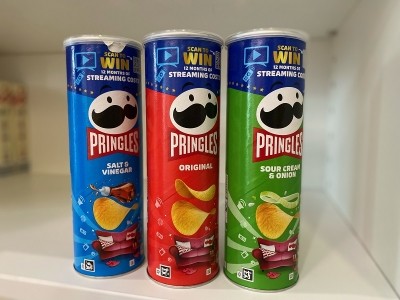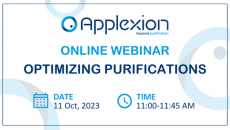GUEST ARTICLE
The top 5 trends driving innovation in packaging science

Packaging is an important branding and marketing tool, allowing product owners to differentiate and stand out on the shelf. To achieve this, companies need to understand what influences consumer purchasing patterns. This can vary wildly depending on the product and the appropriate marketing message.
For instance, according to a recent study published in the Journal of Packaging Technology and Science, when it comes to plant-based hamburgers, it might be wise to use green, yellow and white in your colour scheme. “These colours can attract attention and induce emotions related to nature, health, nutritional value and quality in packages of plant-based hamburgers,” the authors of the sentiment study concluded.
Similar research, published in the same journal but looking at coffee, found brands seeking to ‘attract consumer attention and generate sensory and hedonic expectations’ in this segment of the grocery store require a different approach. “Important attributes related to coffee could be induced in the volunteers using food packaging with black, red and green colours,” the researchers discovered. However, they advised, packaging with pink, light and dark blue, as well as yellow colours should be avoided as they were ‘rejected’ by coffee consumers.
The role that packaging plays in the food and beverage sector is more than skin-deep. Beyond the initial visual impact, what factors are influencing consumer attitudes to packaging? What attributes do people look for in packaging? And does this impact purchase intent?
Price and performance: Key attributes for innovative packaging solutions
If we look beyond the peacocking of on-pack promotions and attention-grabbing colour schemes, the primary purpose of packaging remains to protect the product. In the food and beverage industry, safety and quality remain the watchwords for packaging innovators.
They are also fundamental considerations for consumers. According to fresh consumer research from market insight provider McKinsey, ‘price, quality and convenience’ are shoppers’ primary buying criteria. But when it comes to packaging specifically, McKinsey suggests ‘hygiene, food safety, and shelf life’ top the bill as the ‘most important characteristics’.
The significance of these considerations is borne out in a review of the packaging-focused scientific literature indexed in the Food Science and Technology Abstracts (FSTA) database, which is produced by educational not-for-profit IFIS Publishing.
The database is used to inform discovery in the research process by academia, government regulators and food industry businesses like Nestlé and PepsiCo. An examination of the database shows that in the five-year period from 2018 to 2023, a total of 33,421 scientific articles on packaging were added to the data set. Of these, 34% focus on safety, quality or hygiene metrics, while 37% contain keywords related to storage and shelf life.
From a food industry perspective, another factor that has proven particularly pertinent in the current inflationary environment is how packaging innovation can be leveraged to lower costs while maintaining performance around the protected characteristics of safety and quality.
R&D can reduce material and energy use through better design and lightweighting, for instance. Innovation in the areas of equipment and automation have emerged as significant themes, with FSTA data flagging the publication of more than 6,000 journal articles, patents, books and reports focused on these topics between 2018 and 2023. Indeed, a total of more than 1,600 publications have concentrated specifically on the issue of cost and expense over that five-year period, FSTA revealed.
Sustainability: A continuing concern in hard times?
These themes speak to the importance of the functional role that packaging plays in the F&B sector. It preserves quality and keeps products safe. Performing on the metrics of quality, safety and price should generally be considered a prerequisite for successful packaging innovation.
But to many shoppers, these functional properties can be considered something of a given. Highly important, but not a difference maker or purchase driver. What packaging attributes are likely to make a consumer reach for one brand over another? What considerations will provide your products with an advantage over the competition?
Returning to McKinsey’s consumer research, which was released in 2023, the current economic climate has meant that the only packaging characteristic that people say is more important today than they reported in 2020 is shelf life. Longer shelf life helps to reduce waste and therefore cut costs in the home, the logic appears to go. Less waste also offers an environmental upside.
Reflecting the dour mood of the moment, the appearance of packaging has seen a whopping 17% dip in the importance survey respondents say it holds. But, McKinsey suggested, this reflects more than the downbeat economic mood. “One key driver here is likely the growth of online shopping, making the appearance of a product’s packaging a less important part of the purchasing decision,” the analysts observed.
Interestingly, a higher proportion of shoppers – 39% - now claim that they are influenced by the sustainability of a product than those that say its appearance is a top priority. With forecasts suggesting that by 2050 there will be more plastic in the sea than fish if we don’t change trajectory, marine litter has emerged as a prominent concern and awareness of recycling is now an ‘extremely common’ conservation activity across multiple demographics.
Within the FSTA database, research examining ‘sustainable’, ‘green’, or ‘eco-friendly’ food packaging accounted for approximately 15% of the total literature on the subject from 2018-2023. It is also an area of rapid growth, with 335% more articles indexed on the issue in 2022-3 than 2018-19.
The massive expansion in this body of research suggests the scientific community is placing its innovation might behind the need to boost the sustainability of food packaging, addressing consumer concerns over packaging pollution as well as the need to reduce the environmental impact of the food system itself.
As a search of packaging solutions in IFIS Publishing’s free-to-access Sustainability Collection demonstrates, food waste, shelf life, and packaging end-of-life (circularity, recycling and biodegradable packaging) are hot topics for inquiry. However, the greatest activity in sustainable packaging research appears to be taking place around efforts to develop new food safe alternative materials.
A review of open access literature added over the last six months to the Sustainability Collection shows a wide variety of biomaterials are under development. From Janus film based on lotus leaves, to pectin films, hemp nano cellulose-based films, or biodegradable PLA/PBS films incorporating lesser galangal with preservative properties, new materials are seen as an opportunity to address the problem of plastic pollution while also boosting the functional performance of food packs.
Moving away from plastic – particularly the virgin plastic that is prevalent in food contact materials – would help cut our reliance on fossil fuels in the sector and address concerns around plastic’s end of life, bypassing the global patchwork of under-invested recycling schemes that are currently failing to conquer the mountains of plastic waste we create annually.
Scientists are keen to couple this approach with other positive functional outcomes as they investigate new ‘active’ or ‘smart’ packaging alternatives that offer extended shelf life and antiseptic or antimicrobial protection.
New approaches to packaging materials could therefore deliver a double win for the environmental footprint of the food industry: reducing the impact of plastic usage while simultaneously cutting food waste. But this will only be achieved if the fundamentals of functionality – quality, safety and cost – remain front of mind.
Sources
Food Science and Technology Abstracts (FSTA) database
https://www.ifis.org/fsta
Available through Web of Science, EBSCOhost, Ovid, and IFIS Collections
IFIS Sustainability Collection
https://www.ifis.org/ifiscollections-sustainability
A free resource available through IFIS Collections
'Understanding the packaging colour on consumer perception of plant-based hamburgers: a preliminary study'
Packaging Technology and Science
Authors: Fonseca, C.; Sa, A. G. A.; Gagliardi, T. R.; Alves, M. J. S.; Valencia, G. A.
DOI: 10.1002/pts.2725
‘The influence of packaging colour on consumer expectations of coffee using free word association’
Packaging Technology and Science
DOI: 10.1002/pts.2675
Authors: Alexia Carvalho Sant'Anna, Maria Jaízia dos Santos Alves, Carla Roana Moraes Monteiro, Talita Ribeiro Gagliardi, Germán Ayala Valencia

















